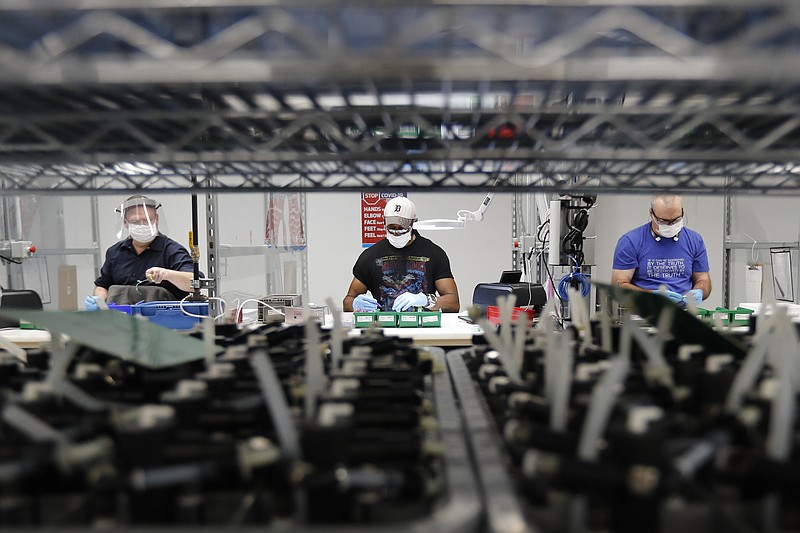WASHINGTON -- U.S. industrial production increased 0.4% in November, with manufacturing receiving a boost from a rebound in output at auto plants after three months of declines.
The Federal Reserve reported Tuesday that the November gain in industrial output followed an even stronger 0.9% increase in October. Even with the gains, industrial output is still about 5% below its level in February before the pandemic hit.
Manufacturing was up 0.8% in November, its seventh consecutive monthly gain, after an upwardly revised 1.1% gain in October. Production of motor vehicles and parts rose 5.3%, the biggest monthly increase since a 31% surge in July. However, after the jump that followed spring lockdowns, auto production fell in August, September and October.
Excluding auto production, factory output increased 0.4%.
Manufacturing has been on a steady, albeit gradual, path to recovery since the pandemic upended production and supply chains in March and April. A separate report Tuesday showed manufacturing in New York state has expanded at a modest pace in December, though companies remained optimistic about future business conditions.
While growth may decelerate as the surge in covid-19 cases weighs on the economy, still-lean inventories paired with solid demand for goods will continue to support the industry.
Output in the mining sector, which includes oil and gas production, rose 2.3% while utility output fell 4.3%, a decline that reflected unseasonably warm weather in November.
U.S. industry operated at 73.3% of capacity in November, still below the pre-pandemic rate of 76.9% in February.
"There are huge swaths of excess capacity throughout the U.S. economy that will make it difficult for firms to raise prices," said Gus Faucher, chief economist at PNC Financial Services. "That in turn will keep inflation below the Federal Reserve's 2% objective for the next couple of years, allowing the central bank plenty of leeway to keep interest rates extremely low to support the ongoing economic recovery."
The Fed, holding its last meeting of the year, is expected to announce today that it is keeping its policy rate at a record low level of 0% to 0.25% to help the economy recover from the pandemic. Many economists do not look for the Fed to start raising rates until 2024 at the earliest.
Michael Pearce, senior U.S. economist at Capital Economics, forecast continued gains in production even as the country endures a new surge in virus cases.
"With firms starting to rebuild lean inventories over recent months, we suspect production will continue to rise even as consumption drops back in the face of new virus restrictions over the coming months," he said.
Information for this article was contributed by Martin Crutsinger of The Associated Press and Reade Pickert of Bloomberg News.
